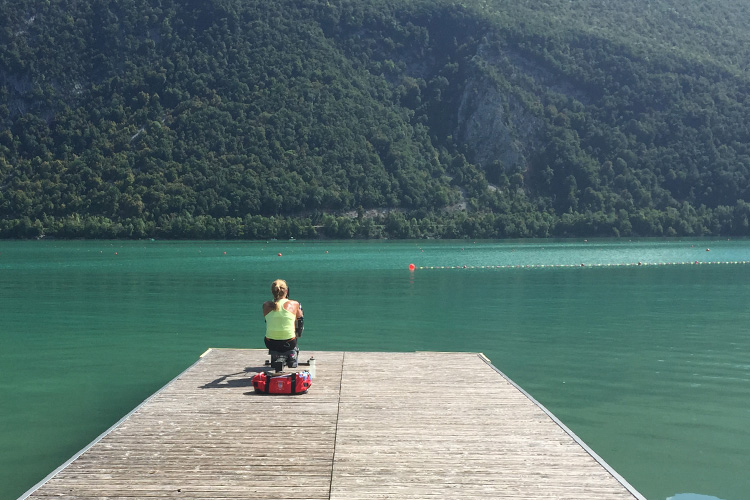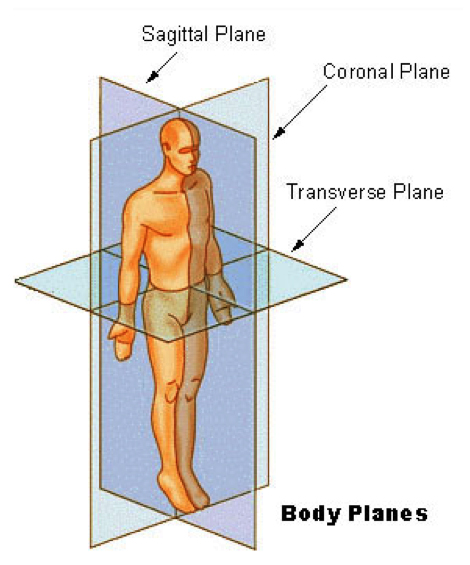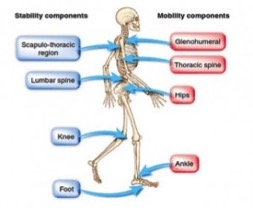Leo Training

It is often assumed that the rowing stroke on a rowing machine (static or sliders) and in the boat is the same. This is not wholly accurate and in this article, I will outline several key differences between the rowing machine (static or sliders), the boat and the impact this has on the athlete.
Change in Planes (of Movement)
There are 3 planes of movement: sagittal (forward & backward ), frontal (left & right), and transverse (rotational) (1). In a boat, the athlete moves through all three planes of motion during the rowing stroke. On the rowing machine, the athlete moves through one plane of motion: the sagittal plane. There is no rotational component or left to right movement on a Concept II Ergometer - static or slider.

Image Courtesy of athletes.wikia.com
Boat Mobility Demands > Rowing Machine Mobility Demands
In the study, “A Kinematic and Temporal Analysis of Ergometer Rowing and On-Water Rowing” (2) Diane Upson found that the demands placed on the body are significantly different between a Concept II rowing ergometer (static and dynamic) and the boat. Rowing in the boat requires athletes to move through a greater range of motion through the ankles, knees, and hips, and less range of motion through the torso and thoracic spine.
What lies between your hips and thoracic spine? Your lumbar spine (low back).
By looking at the joint by joint theory by Gray Cook and Mike Boyle we can better understand the primary role of each of these joints along the entire kinetic chain.

The Joint by Joint Theory | Image Courtesy of National Academy of Sports Medicine
Now, let’s take a look at the variance of angle degrees between the knee, hip, and torso between the boat and rowing machines (static and sliders).
Simply put, there is greater trunk flexion required on the rowing machine than the boat. Conversely, the hip and knee flexion in the boat is much greater than on the rowing machine. However, in the boat the foot stretcher angle and height can be adjusted. This allows you to work around mobility limitations of an individual.On the rowing machine the foot stretcher height is adjustable but the angle is fixed. These differences in the foot stretcher also contribute to the differences in flex ion between the torso, hips, and knees.
If you would like to read the full thesis study click here.
Means and Standard Deviation for the Trunk Angle at the Catch
| Trial | Mean | Standard Deviation |
| Ergometer | 36.66 | ± 8.70 |
| Ergometer with Slides | 37.89 | ± 7.21 |
| On-Water | 23.68 | ± 5.76 |
Means and Standard Deviation for the Hip Angle at the Catch
| Trial | Mean | Standard Deviation |
| Ergometer | 26.65 | ± 4.17 |
| Ergometer with Slides | 26.05 | ± 3.16 |
| On-Water | 35.03 | ± 5.82 |
Means and Standard Deviation for the Knee Angle at the Catch
| Trial | Mean | Standard Deviation |
| Ergometer | 52.31 | ± 7.79 |
| Ergometer with Slides | 60.21 | ± 7.01 |
| On-Water | 73.34 | ± 7.58 |
How These Difference Impact Athletes
After spending 3-4 months on a rowing machine and then transitioning back to the boat you are asking an individual to access a greater range of motion and move through multiple planes of movement. No wonder this transition can cause a flare up in aches and pains and potential injuries. It’s a different stimulus on the body! Rowers need greater ankle dorsiflexion, hip mobility and thoracic rotation in the boat than the rowing machine.
Over time the joints that should have mobility stiffen up and the joints that should provide stability become more mobile. As a result, our ankles, hips, and thoracic spine become stiff and our low back becomes more mobile. A study in the British Journal of Sports Medicine, “Factors contributing to low back pain in rowers”, found that 94% of rowers showed hypermobility of the lumbar spine. (3)
It is critical that athletes work to maintain their mobility through their ankles, hips, and thoracic spine during winter training while they are primarily on rowing machines and as they transition back to the water. It is also recommended that they do a strength training program that addresses and balances the body from the demands of the rowing stroke.
“Proximal Stability for Distal Mobility” - Gray Cook
The mobility needed in the rowing stroke will only be maintained if individuals have reflexive core stability. When stability is lost, mobility goes as well. A loss of stability is a threat to our safety and the body will protect itself by stiffening up.
I will cover mobility and strength training exercises that can be implemented as athletes move between the machine and boat in part 2 of this blog.
Joe DeLeo is a former collegiate rower turned strength coach. His practice focuses on working with endurance athletes to get stronger so they can perform their best. He also has tremendous experience rehabbing rowing-related injuries and stresses. He focuses on three modalities to train his athletes and clients: bodyweight, kettlebells, and indian clubs.
He is a Certified Strength and Conditioning Specialist through the National Strength and Conditioning Association. He holds certifications as a Functional Movement Specialist, Rocktape FMT II, and is a Level I Girya with StrongFirst.
He lives in Providence, RI; you can read his blog posts at www.leotraining.io
References
- Boyle, Michael. Cook, Gray. The Joint by Joint Concept. Movement. 2010. p 319-321. Print.
- Upson, Diane E. A Kinematic and Temporal Analysis of Ergometer Rowing and On-Water Rowing. Southern Connecticut State University, 2003.
- Reid, Duncan A. Mcnair, Peter J. Factors contributing to low back pain in rowers. British Journal of Sports Medicine. Volume 34 – Issue 5.
If you enjoy and rely on row2k, we need your help to be able to keep doing all this. Though row2k sometimes looks like a big, outside-funded operation, it mainly runs on enthusiasm and grit. Help us keep it coming, thank you! Learn more.
Comments | Log in to comment |
- Bont Rowing
- Calm Waters Rowing
- Concept 2
- Craftsbury Sculling
- The Crew Classic
- CrewLAB
- Croker
- Dad Vail Regatta
- Durham Boat Co.
- Empacher
- Faster Masters
- Filippi
- Fluidesign
- h2row.net
- HUDSON
- Live2Row Studios
- Nielsen-Kellerman
- Oak Ridge RA
- Peinert Boat Works
- Pocock Racing Shells
- Race1 USA
- RowKraft
- Rubini Jewelers
- Vespoli USA
- WinTech Racing
- Bont Rowing
- Calm Waters Rowing
- Concept 2
- Craftsbury Sculling
- The Crew Classic
- CrewLAB
- Croker
- Dad Vail Regatta
- Durham Boat Co.
- Empacher
- Faster Masters
- Filippi
- Fluidesign
- h2row.net
- HUDSON
- Live2Row Studios
- Nielsen-Kellerman
- Oak Ridge RA
- Peinert Boat Works
- Pocock Racing Shells
- Race1 USA
- RowKraft
- Rubini Jewelers
- Vespoli USA
- WinTech Racing


















09/22/2016 6:15:00 PM